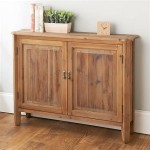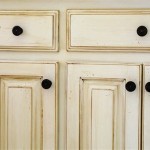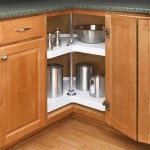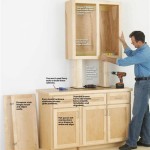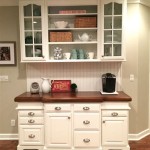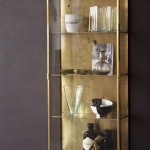Retrofitting Your Kitchen With Vintage Cabinet Hardware: Design Guidelines
The process of retrofitting a kitchen with vintage cabinet hardware represents a significant undertaking that can dramatically alter the aesthetic character of the space. Sourcing appropriate hardware, understanding compatibility issues, and adhering to design principles are all critical to achieving a successful and visually cohesive outcome. This process requires a thoughtful approach that balances historical accuracy with modern functionality, ensuring that the resulting kitchen is both beautiful and practical.
The resurgence of interest in vintage design has made retrofitting kitchens with period-appropriate hardware a popular trend. This involves more than simply replacing existing knobs and pulls; it entails a deliberate effort to recapture the essence of a specific era. Whether it's the ornate detailing of Victorian-era hardware, the streamlined simplicity of Art Deco pieces, or the functional charm of mid-century modern designs, careful selection and installation of vintage hardware can imbue a kitchen with a unique sense of history and character. However, successful retrofitting requires careful planning and attention to detail.
One of the initial steps involves thoroughly researching the specific style period that inspires the renovation. Different eras are characterized by distinct hardware styles, materials, and finishes. Victorian kitchens, for example, often featured heavily ornamented brass or cast iron pulls and knobs, while Art Deco designs favored chrome and geometric shapes. Mid-century modern kitchens frequently incorporated simple, minimalist hardware made from materials like wood, plastic, or brushed metal. Understanding these nuances is crucial for selecting hardware that accurately reflects the desired aesthetic.
Beyond style, the practical aspects of installation must also be considered. Modern cabinet construction often differs significantly from older methods, which can create challenges when retrofitting vintage hardware. Screw hole sizes, door and drawer thicknesses, and handle spacing may all vary. Adapting vintage hardware to fit modern cabinetry may require modifications to either the hardware itself or the cabinet doors and drawers. Professional assistance from a carpenter or cabinet maker may be necessary to ensure a seamless and secure installation.
Key Considerations When Selecting Vintage Hardware
Selecting the right vintage hardware requires careful consideration of several factors. Beyond aesthetics, functionality, condition, and compatibility all play crucial roles in ensuring a successful retrofit. Dismissing these considerations can lead to frustration and compromise the overall aesthetic of the kitchen.
One primary consideration is the overall style and scale of the hardware relative to the cabinets. Overly large or ornate hardware can overwhelm smaller cabinets, while undersized pieces may appear insignificant on larger doors and drawers. The hardware should complement the cabinet design and the overall kitchen aesthetic, creating a sense of visual balance and harmony. Consider the material of the cabinets as well. Dark wood cabinets can often handle more substantial, darker hardware, while lighter cabinets benefit from lighter, more delicate options.
The functionality of the hardware is equally important. Antique latches and catches may not function as smoothly as modern counterparts, and some vintage drawer pulls may not be ergonomically comfortable. Prioritize hardware that is not only visually appealing but also easy to use and well-suited for the demands of a modern kitchen. Test the hardware before purchasing it, if possible, to ensure that it operates smoothly and feels comfortable in hand.
The condition of the vintage hardware is another crucial factor. While some degree of wear and tear is expected in antique pieces, excessive damage, such as cracks, rust, or missing components, can compromise both the functionality and the aesthetic appeal of the hardware. Inspect the hardware carefully before purchasing it, and consider whether any repairs or restoration will be necessary. Rust can be removed, and finishes can be restored, but extensive damage may render the hardware unusable. Sourcing from reputable antique dealers or restoration specialists can help ensure the quality and authenticity of the hardware.
Compatibility with existing cabinet hardware and hinges is essential. If some of the original hardware is being retained, ensure that the vintage pieces selected complement the existing hardware in terms of style, finish, and size. Mismatched hardware can create a disjointed and visually jarring effect. Consider replacing all of the hardware to ensure a cohesive and unified look. Furthermore, ensure that the new hardware doesn't interfere with door or drawer function, particularly hinge placement. Changes in placement of pulls can affect the structural integrity of the door or drawer over time if not addressed properly.
Sourcing and Preparing Vintage Cabinet Hardware
Acquiring authentic vintage cabinet hardware necessitates careful investigation and often requires a degree of patience. Reliable sources include antique stores, architectural salvage yards, online marketplaces, and estate sales. Each of these options presents its own advantages and disadvantages.
Antique stores often offer a curated selection of vintage hardware, but they may also charge higher prices due to the expertise and overhead involved. Architectural salvage yards can be a treasure trove of unique and hard-to-find hardware, but the selection may be less organized and require more searching. Online marketplaces, such as eBay and Etsy, provide access to a vast array of vintage hardware from sellers around the world, but it's crucial to carefully evaluate the seller's reputation and examine the product photos before making a purchase. Estate sales can offer the opportunity to acquire hardware at significantly lower prices, but the selection is often limited and the condition of the hardware may vary.
Regardless of the source, it's important to thoroughly inspect the hardware before purchasing it. Check for signs of damage, such as cracks, rust, or missing components. Examine the finish to determine whether it's original or has been altered. Verify that the hardware is authentic and not a reproduction. Consider the number of pieces needed and ensure that enough matching hardware is available to complete the project. It is always wise to purchase a few extra pieces in case of breakage or loss during installation.
Once the vintage hardware has been acquired, it will likely require some degree of cleaning and restoration. Remove any dirt, grime, or rust using appropriate cleaning solutions and tools. Avoid harsh chemicals or abrasive cleaners that could damage the finish. For brass hardware, a brass cleaner can restore the shine and luster. For iron hardware, a wire brush can remove rust, followed by a protective coating to prevent further corrosion. Repair any minor damage, such as loose screws or broken hinges. Replace any missing components with appropriate replacements. Consider applying a sealant or protective coating to the hardware to protect it from wear and tear and to preserve its finish.
Preparation may involve adapting the hardware to fit modern cabinetry. This may require drilling new holes, modifying screw lengths, or using adapters to accommodate different cabinet thicknesses. In some cases, it may be necessary to enlarge existing holes or to add backing plates to provide additional support. These modifications should be performed carefully and professionally to avoid damaging the hardware or the cabinets. Employing skilled craftspeople with experience in hardware modification is a practical approach to ensure successful adaptation of vintage pieces.
Design Principles for Incorporating Vintage Hardware
Integrating vintage hardware into a kitchen design requires a cohesive approach that considers the overall aesthetic and functional requirements of the space. It's not simply about adding old pieces; it's about creating a harmonious blend of vintage charm and modern convenience.
Maintain consistency throughout the kitchen. While mixing and matching different styles of vintage hardware can create an eclectic look, it's important to maintain a sense of cohesion. Choose a dominant style or theme and use it as a guiding principle. For example, if the primary style is Art Deco, incorporate Art Deco hardware on most of the cabinets and drawers, and use complementary pieces sparingly to add visual interest. Avoid using too many different styles, as this can create a cluttered and disorganized look.
Pay attention to scale and proportion. The size of the hardware should be appropriate for the size of the cabinets and drawers. Overly large hardware can overwhelm smaller cabinets, while undersized hardware may appear insignificant on larger doors. Consider the overall proportions of the kitchen and choose hardware that complements the space. Larger kitchens can often handle more substantial hardware, while smaller kitchens may benefit from more delicate pieces.
Consider the finish and color palette. The finish of the hardware should complement the color palette of the kitchen. For example, brass hardware can add warmth and richness to a kitchen with dark wood cabinets, while chrome hardware can create a sleek and modern look in a kitchen with white cabinets. Consider the other metal elements in the kitchen, such as the faucet, lighting fixtures, and appliances, and choose hardware that coordinates with these elements. The colors selected either complement or subtly contrast with the kitchen cabinet's shade, depending on the overall desired visual impact. Neutral kitchens may benefit from a pop of color in the hardware, while bolder color schemes may require hardware that blends in.
Balance vintage elements with modern updates. While the goal is to incorporate vintage hardware, it's important to balance these historical pieces with modern updates to ensure that the kitchen is both functional and stylish. Consider incorporating modern appliances, countertops, and lighting fixtures to create a contemporary feel. Conversely, maintaining some vintage elements throughout the kitchen, such as a vintage sink, stove, or refrigerator, can enhance the overall aesthetic. The integration of old and new should appear seemless.

5 Ways To Add New Life Old Cabinets Daniel Kanter

A Simple Guide To Replacing Kitchen Cabinet Hardware Nestrs

The Guide To Creating A Vintage Kitchen Storage Space
:max_bytes(150000):strip_icc()/2628001_Madis_Ktchn_Sink-2000-27cd2855839741438bf68d399fd4e775-8dde38073ab745b58720d5c48959a5a1.jpg?strip=all)
Vintage Hardware Will Immediately Add Character To Any Space

The Guide To Creating A Vintage Kitchen Storage Space

The Guide To Creating A Vintage Kitchen Storage Space

A Guide To Updating Your Kitchen Cabinet Hardware Bella Tucker

Total Guide To Understanding The Value Of Restoring Old Cabinets

10 Simple Ideas To Update Your Kitchen Cabinets Jenna Sue Design

10 Simple Ideas To Update Your Kitchen Cabinets Jenna Sue Design
Related Posts

